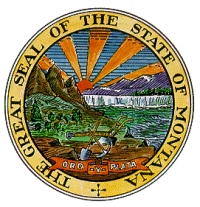Climate Change Adaptation - Montana

| |
|||||||||||||||
Climate Change History
In 2010, the Natural Resources Defense Council (NRDC) included Montana in a list of states most vulnerable to water supply shortages as a result of climate change. The Nature Conservancy concurs with the NRDC’s assessment, citing declining snowpack, early snowmelt, and higher water temperatures as stressing the water supply in Montana to the point where “difficult choices between the needs of municipal, agricultural, and recreational users and those of wildlife and fisheries” will need to be made. In 2007 Montana finished a climate action plan with assistance from the Center for Climate Strategies. Montana’s plan focuses primarily on greenhouse gas reductions (mitigation). It did not include a focus on preventing and lessening the impacts of climate change effects already underway (adaptation). The Montana Wetland Council hosted a meeting on Climate Change and Wetlands in 2008.
Current & Future Action
Montana has not developed a climate change adaptation plan for wetlands as of 2012. Montana’s Climate Change Advisory Committee on Agriculture, Forestry and Waste Management Technical Work Group has been examining options for carbon sequestration and carbon storage in forests. http://www.mtclimatechange.us/Agriculture_Forestry.cfm
Montana Climate Change Plans and updates are posted on the state’s Climate Change page: http://deq.mt.gov/ClimateChange/default.mcpx
Pilot Programs/Current Studies
The Wildlife Conservation Society, Montana Department of Environmental Quality (DEQ) and Montana Fish Wildlife and Parks recently embarked on a project to re-locate ‘nuisance’ beavers to suitable sites. The project is intended to promote resiliency of stream/riparian ecosystems during climate change (particularly droughts), including habitat for the rare Arctic Grayling in the Big Hole River watershed.
Vulnerability of northern prairie wetlands to climate change (2005)
http://pubs.er.usgs.gov/publication/5224588
For More Information
Montana’s climate action plan is available at: http://www.mtclimatechange.us/
At the Montana Wetland Council Climate Change and Wetlands Meeting in 2008 Bob Sanders and Lynda Saul made powerpoint presentations available here:
http://www.deq.mt.gov/wqinfo/wetlands/WetlandCouncilMtgs_files/BSandersOct2008.pdf
http://www.deq.mt.gov/wqinfo/wetlands/WetlandCouncilMtgs_files/LSaulOct2008.pdf
Montana Climate Action Project
http://www.montanaclimatechange.com/learn.php
Low Flows, Hot Trout: Climate Change in the Clark Fork Watershed (2008)
http://www.clarkfork.org/images/stories/publications/lowflowshottrout.pdf
For more information about the USGS Glacier Loss Study contact Dan Fagre:
http://www.nrmsc.usgs.gov/staff/fagre.html
For more information contact Lynda Saul at (406)444-6652 or lsaul@mt.gov.
